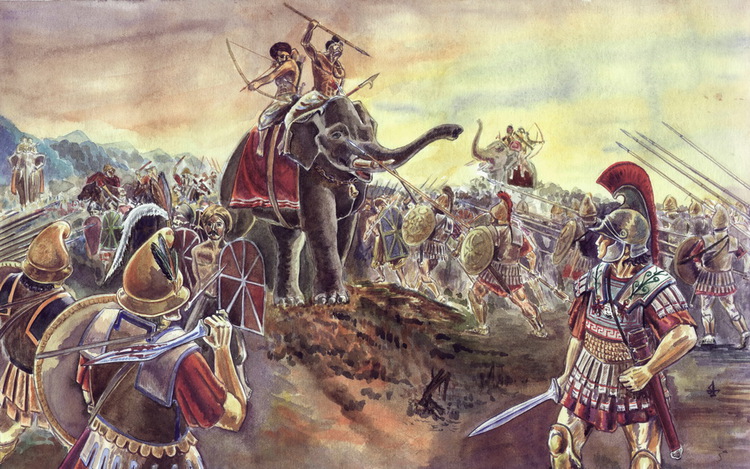The first information about bulat steel appeared 2,300 years ago from the participants of the famous campaign of Alexander the Great to India. Warriors told that blades of the Indians chop stones and cut light fabrics in the air.

Perhaps it was this information that Walter Scott used in his novel “The Talisman”. It describes a contest of agility between Sultan Saladin and English King Richard the Lionheart. Richard with his steel sword cut the spear of one of the knights into two parts. In response, Saladin threw a blanket of the finest fabric into the air and cut it with his damask steel blade.

Damask steel actually first appeared in India. The Indians sold wootz – “bars” of steel to the countries of the East. These were flat cakes with a diameter of 12.5 cm and a thickness of 0.25 cm. Wootz weighed about 900 grams. Such a “bar” was cut in half, into equal parts, so that the buyer could view the structure of metal. Indian masters had perfect skills in steel processing. “There will never be a people who would be better versed in certain types of swords and their names than inhabitants of India,” Biruni wrote.

It was a mystery how people of the Middle Ages managed to create unusually strong, stainless bulat steel blades. Various scientists in many countries tried to solve the mystery of bulat steel. The famous English physicist Mikhail Faraday tried to produce bulat steel by adding aluminum and platinum to steel.
In the end, the secret of bulat steel was revealed at the Zlatoust weapons factory by the Ural metallurgist, Major General of the Corps of Mining Engineers, Pavel Petrovich Anosov. He made hundreds of experimental melts, made a number of discoveries and made bulat steel.

The first blade was forged in 1833.
The bulat saber easily bent 90-120 degrees without breaking. At the same time, a saber could make a nick on a steel rail when hitting full-force, without any damage left to the saber itself.

A few years later, the classic work of Pavel Anosov On Bulat Steels was published in the Mining Journal, and then released as a separate brochure. The publication was translated into several languages and became the legacy of world science.

For 80 years, the Zlatoust weapons factory remained the only enterprise in the world where they could make bulat blades that had a patterned surface, incredible strength, elasticity, and blade sharpness.
Murchison, the director of the Royal Museum of London, who visited Zlatoust in 1841, wrote that the Zlatoust cold steel factory “is at a high degree of perfection.”








